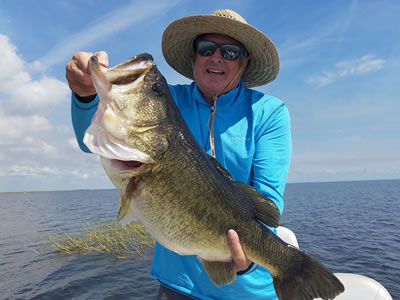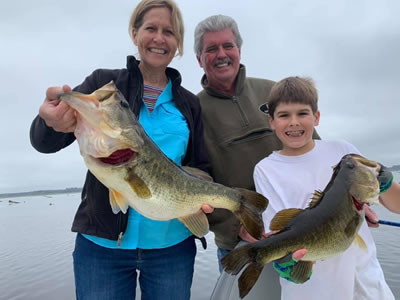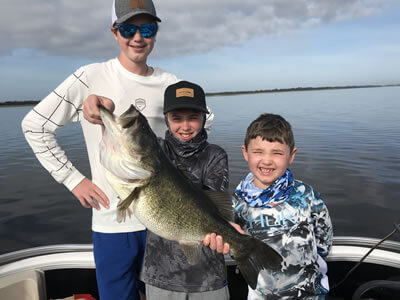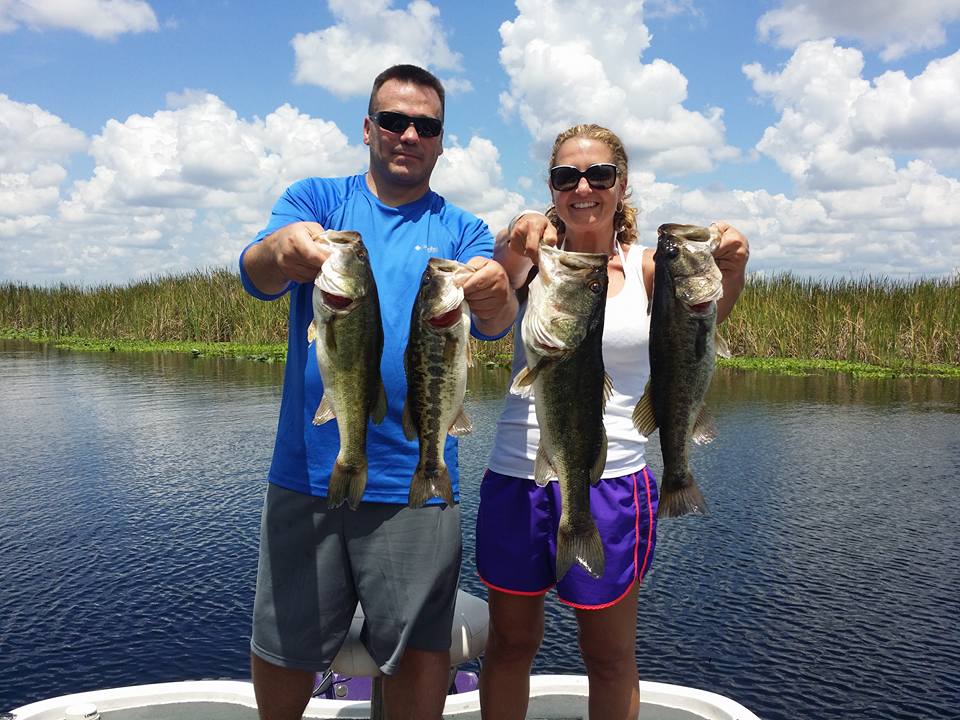Hybrid Striped Bass
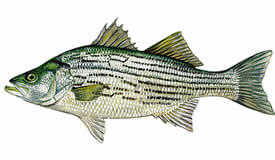
ALSO CALLED: Whiterock bass or a wiper
Hybrid Striped Bass About
A hybrid bass, also known as a Whiterock bass or a wiper, is created by cross-breeding a white bass and striped bass. A hybrid striped bass crossed between a female white bass, and a male striped bass is a sunshine bass. A hybrid crossed between a male white bass, and a female striped bass is a Palmetto Bass.
Hybrids live in slow-moving streams, lakes, ponds, and large reservoirs; they rarely live in shallow waters.
The incorporation of white bass genes allows hybrids to have a greater tolerance for warm water temperatures up to 90 degrees Fahrenheit.
Hybrid striped bass came to be part of aquaculture in the United States in the late 1980s. Today, hybrids are a hard-fighting sought-after sport fish among anglers. Fishing for hybrids is most prevalent in large southeast reservoirs and lakes.
Parent Species
White bass and striped bass are very similar in habits, have similar markings, and live in mostly the same waters. The main three differences are body shape, stripes, and mouth. The white bass is rounder, while the striped bass is more slender. The lines on white bass are fainter, and only one reaches the tail. The striped bass has distinct markings that mostly all reach the tail. The white bass has only one tooth patch, while the striped bass has two tooth patches. White bass are freshwater fish, while striped bass can live in both fresh and saltwater.
Hybrid Striped Bass Appearance
Hybrids look similar to the two-parent species but are generally shorter than Stripers and not as deep-bodied as White bass. The hybrid striped bass has horizontal stripes similar to the striped bass, except the lines for a hybrid striped bass are always broken, whereas those for the striped bass are always solid. The hybrid striped bass has two separate tooth patches at the back of the tongue, just like the striped bass parent species. Upon growing, it gets deeper-bodied and becomes thicker, thus making them have a stocky and distinctive short appearance.
The hybrid striped bass has two dorsal fins not connected by tissue; the first dorsal fin is spined. Their coloration depends on their habitat’s water quality but ranges from black to light gray.
Hybrid Striped Bass Size
The general adult size of the hybrid striped bass fish is 15 to 20 inches. They typically don’t exceed more than 10 pounds but will occasionally reach the 22-pound range. The majority of hybrids caught are between 2-5 pounds.
Record
An angler caught the largest hybrid striped bass in 1997. It weighed 27 pounds and 5 ounces.
Spawning Habits
Striped bass fishes typically spawn in March, April, and May. They do it when the water temperature reaches the range between 60 to 68 degrees. As far as spawning is concerned, striped bass prefers rivers, and once they release millions of eggs, the water current carries them to various places.
Striped bass spread their eggs across the river, and they show no form of protection or parental care. When spawning, up to seven or eight males surround a large female and bump into her. During the ovulation stage, ripe eggs are released and scattered in the water. Simultaneously, male stripe bass fishes release their sperm.
Naturally, fertilized eggs must go with the river currents to avoid any form of suffocation until hatching occurs, which takes about 48 hours. Little striped bass fingerlings stay in estuaries and low rivers. Since the fertilized eggs must go with the currents until hatching, impoundments are unfit for reproduction.
It must be free-flowing freshwater. There are lots of difficulties in hatchery procedures, especially for procuring females with eggs flowing freely. However, there is a modern technique for inducing ovulation through hormonal use.
Feeding Habits
Atlantic striped basses are voracious eaters and opportunistic predators who mostly consume various invertebrates and small fish. Adults prefer golden shiners, threadfin shad, and gizzards, while the young ones enjoy feeding on mayflies and amphipods. The significantly smaller ones feed mostly on zooplankton.
Like every other temperate bass, the striped bass move in schools and tend to feed simultaneously. Striped bass feeds the most during the early hours of the day and sporadically throughout the day. Their feeding slows down when the temperature of the water drops below 50 degrees.
Life Span and Growth
The striped bass can live for up to 30 years. Usually, their growth depends on where they live. Male stripers get sexually mature between 2 and 4 years of age, while females are mature enough to reproduce when they are 4 to 8 years old.
These predators can get a size of up to 10 -12 inches in the first year. Stripers have reached weights of over 45 pounds in Florida.
Florida Striped Bass Stocks
Striped bass stopped naturally reproducing in the St Johns River by the early 1970s. The striped bass stocks in the St. Johns river started in 1972. Further developments in the hatchery led to large-scale productions of the sunshine bass in 1981. The FWC and USFWS have stocked over 20 million stripers and 10 million sunshine in the last 40 years. The stocking in the Florida river served to restore the striper population and provide fishermen with exceptional angling opportunities.
Reproducing
Hybrid striped bass generally cannot naturally reproduce, so their numbers depend on the number of fish stocked. In the spring, hybrids may undergo spawning migrations to upstream areas into reservoirs in an attempt to spawn despite being sterile. The average lifespan is between five to six years.
However, there have been reports of fertile hybrid striped bass that backcross with the white bass. Hybrid striped bass is one of the only hybrids that can be fertile. In this case, males reach maturity around one year of age, and females reach maturity at about two years old. They produce eggs and sperm in the spring when the water temperatures are 59 to 68 degrees Fahrenheit. The level of fertility of hybrids is reduced compared to the parental species.
Diet
A hybrid striped bass diet includes the white and black crappie, the bluegill, shad, sunfish, and the fathead minnows—Threadfin and Gizzard shad are the main prey species. Fish under 50 mm feed mostly on crustacean zooplankton. After growing beyond 50 mm, the young hybrid’s diets consist of mostly small fish, insects, and large zooplankton.
Fishing For Hybrid Striped Bass
Catching these sportfish is very rewarding but also can be challenging to locate.
Generally, hybrid stripers are most active during dawn and dusk, times of low light. They tend to congregate in deeper water near flowing streams in the late winter.
The hybrid fishing season begins in mid-spring and goes up to early fall. Summer is the most productive period for striped bass hybrids.
During these times of the year, the water temperatures range from 45 to 80 degrees Fahrenheit, and anglers can find the hybrid striper feeding in shallower water. Anglers can catch them by boat or off the shoreline with baitfish imitating lures.
Hybrid Stripers will prey on baitfish at the water surface in the early morning and evening in the fall. During warmer months, anglers can target hybrid stripers by imitating baitfish while trolling at cooler depths or by drifting live baits or cut baits at these depths.
Locate
When fishing reservoirs and lakes, consider looking for raised and distinctive humps in shallow waters surrounded by much deeper water, especially in the summer.
The most common areas where one can find these fish include bottom structures such as humps, drop-offs, points that conjoin with cooler depths and windblown shores. The points are a great place to start fishing when there is minimal light at dawn or dusk.
Fish the lakes and reservoirs established with the hybrid stocking program and look for locations near the current. Strong currents tend to push food particles and other materials to the surface and lure the baitfish for food. You can use a fish finder or keep a close eye on diving birds to locate the hybrid striped bass.
Techniques
Hybrids can be caught with various angling methods, including trolling, spinning, bait casting, and fly fishing. Anglers can catch them on artificial lures, live baits, or cut baits. Heavy spoons and jigs are most popular in fast water situations, chatter baits, minnow baits, and other crankbaits are best in areas with less current. Other effective baits for this fish would be gizzard shad, chicken liver, creek chubs, shiners, alewife, herring, and any baitfish. Chicken livers are almost always a great choice to increase the chances of catching these hybrid stripers.
Edibility
This hard-fighting sportfish has delicious white, firm, and flaky meat. You find that in many restaurants in the United States, they have “striped bass” and smallmouth bass on their menu, but they are farm-raised hybrid striped bass. They produce hefty fillets and have a good texture for baking, broiling, or grilling. This fish is a low-fat source of omega-3 fatty acids and selenium but shouldn’t be overconsumed.




